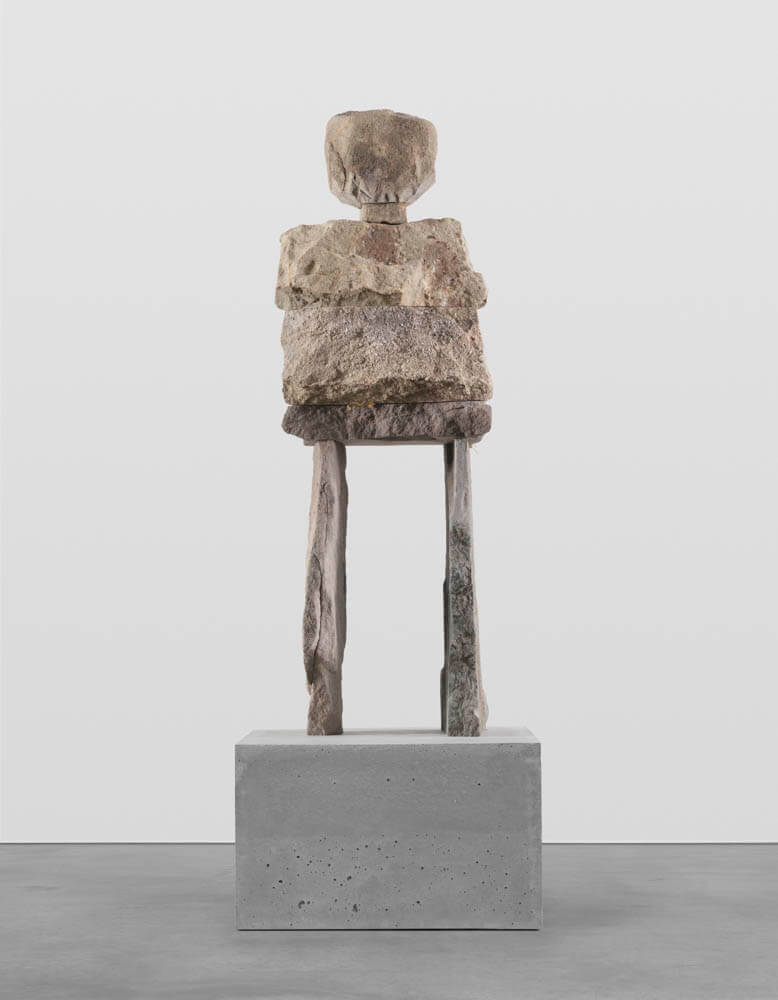
The Receptive soul is willing to consider multiple paths. Someone who values connection with others.
Explore the works below. Before expanding the text, think to yourself:
What do you see?
What do you feel?
What might it be addressing?
What questions do you have?
Do you like it? Why or why not?
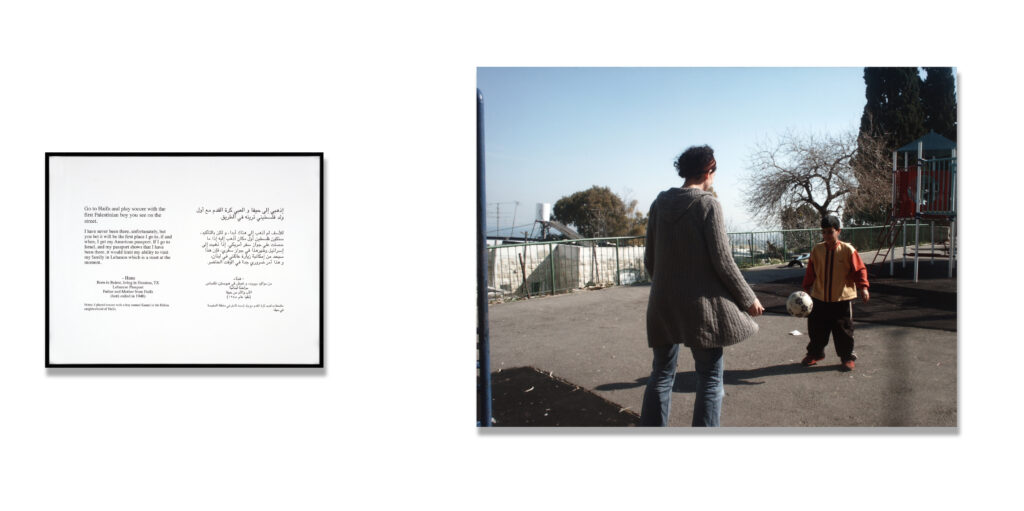
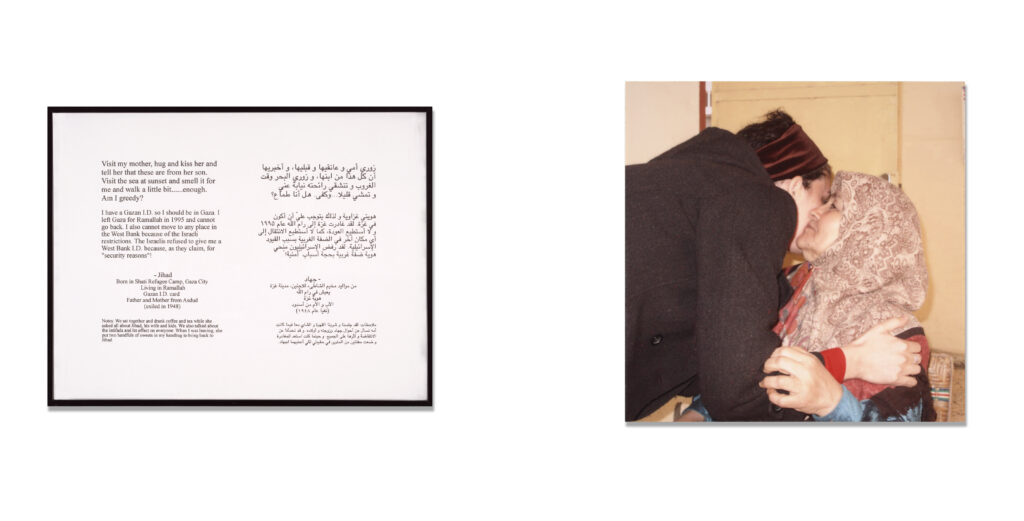
Expand to learn more
These are two parts of Emily Jacir’s Where We Come From series (2001-2003). In Where we come from, Jacir, who is Palestinian but holds a US passport, asked Palestinians living outside of Palestine and unable to enter, “If I could do anything for you anywhere in Palestine, what would it be?” From there, she completed their requests (when possible) and documented the experience at a pinnacle moment. Here, I have chosen Hana (L) and Jihad (R). In Hana, she is asked to go to Haifa and play soccer with the first Palestinian boy she finds. Hana, who was born in Beirut, Lebanon, holds a Lebanese passport. In Jihad, she is asked to visit Jihad’s mother who is in Gaza. Despite having a Gazan ID, Jihad is not allowed to reenter Gaza and is forced to stay in Ramallah in the West Bank.
In Where we come from, Jacir is the Receptive soul, one who is open to suggestion and finds meaning in doing things for others. In presenting this topic from the perspective of the individual person, Jacir also encourages the viewer to be receptive, to be understanding. This series was first released in the early 2000s, when, in the wake of 9/11 and the American invasion of the Middle East, American sentiments towards Arab countries and peoples were horrifically dehumanizing. As much as artists should not have the responsibility to humanize others or convince viewers that people deserve basic human rights, Jacir’s work has a particular straight-forwardness to humanity and that forces the viewer to reassess their standards of care for others.
About the artist
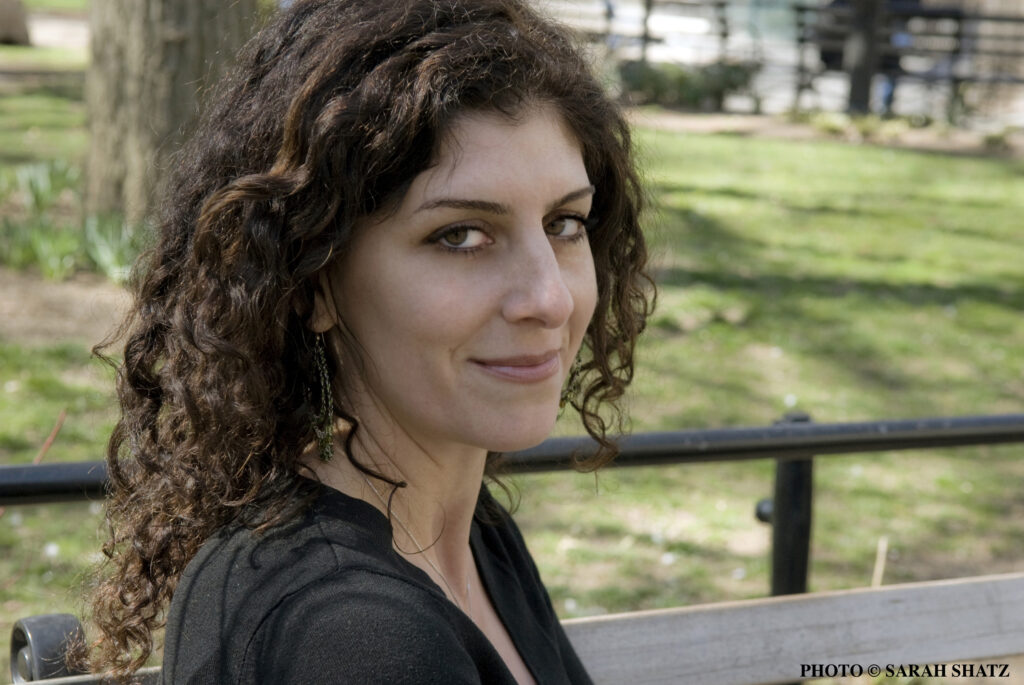
Emily Jacir (b. 1970) is a Palestinian-American artist and filmmaker whose work is interested in resistance and uncovering silenced historical narratives. She works often within the themes of displacement, exile, community, and diaspora, particularly in relation to Palestinian occupation.
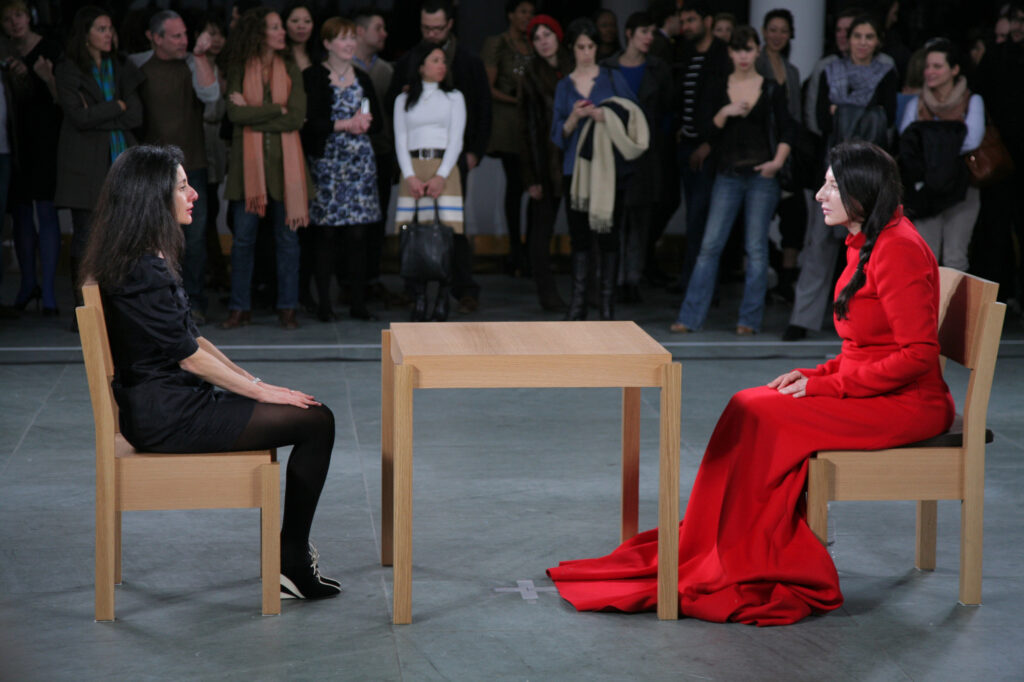
Expand to learn more
This a photograph from Marina Abramović’s performance The Artist is Present (2010). The performance was in total, 736.5 hours long. For her 2010 retrospective at the Museum of Modern Art in New York City, the artist sat in a chair across from people who stood in line hours to sit across from her. Sitters were allowed to determine how long they sat, with most sitting no longer than five minutes and a few sitting all day.
Throughout every person who came through, Abramović maintained eye contact, sometimes crying when they cried. By the end of the experience, she had sat across from over 1,500 sitters. The event ended up going viral with celebrities taking part.
In many ways, it can be very hard to conceptualize how this experience could be meaningful, many of the people sitting had never even heard of Abramović, and yet had visceral experiences. In my mind, Abramović is toying with our ability to be open, especially with those we’ve never met before. In some ways, your most authentic self can be shown only to people who don’t know you. Would you want to have been here and participated in the performance? Why or why not?
About the artist

Marina Abramović (b. 1946) is a Serbian conceptual and performance artist who explores the pushing the body and the mind and the relationship between the performer and the audience. In many ways, she can be considered the pioneer of bodily performance art.
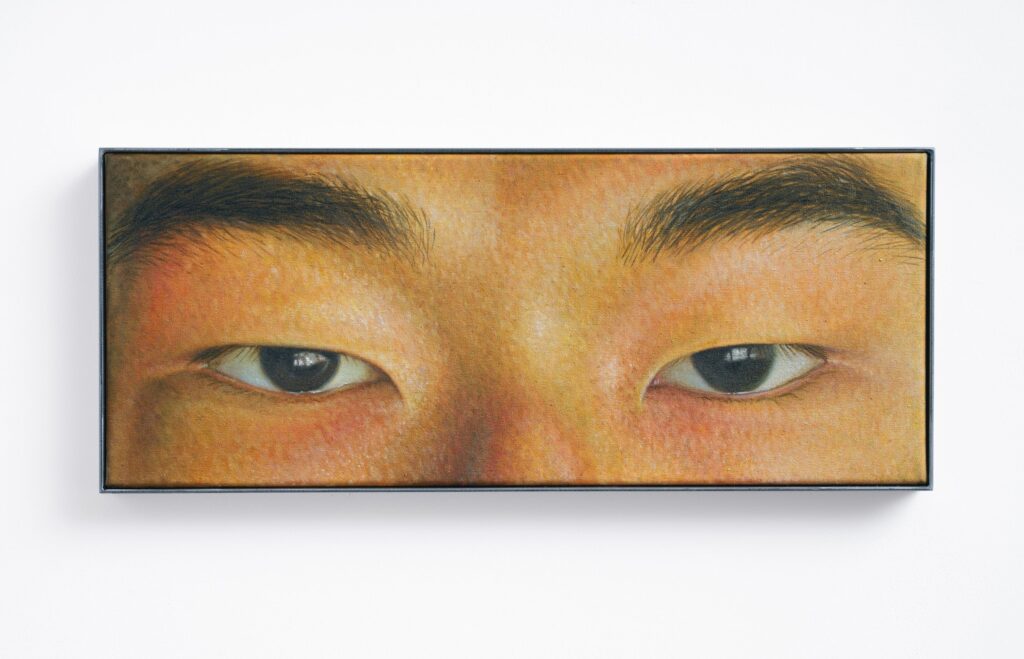
Expand to learn more
This is You’re looking at me 006, one painting in a series of self-portraits Kim has made focusing primarily on his eyes. “Asian” eyes—particularly monolidded or epicanthic eyes—have been historically ridiculed and mocked in Western media and culture before entering a space designated for fetishization. For Kim, his eyes signify ‘Otherness’. As a model, Kim is used to having no control over who looks at him. In his paintings, he reclaims a bit of that control, taking the opportunity to look back at the viewer.
As you encounter Kim’s eyes, larger than life and staring at you, what conversation do you have with the painting? Are we having a conversation with Kim himself?
About the artist
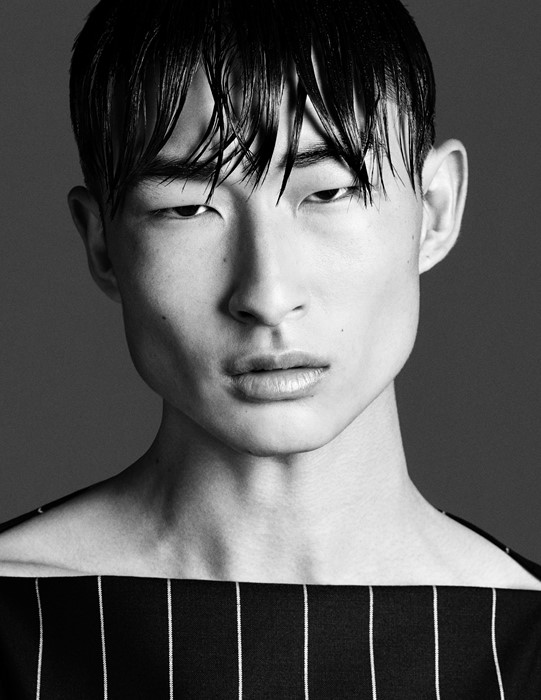
Kim Sangwoo (b. 1980) is a British-Korean painter whose work is centered around perceptions of his race and personhood as a model, an Asian man and an immigrant. He often paints himself—or parts of himself.